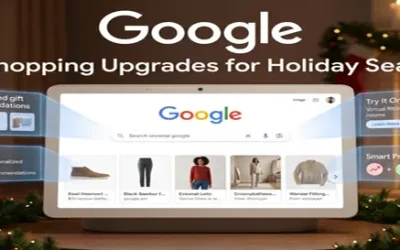While advertising in Google Ads, marketers mostly meet ad disapprovals and the reasons will be extremely vague. To solve this concern, Google recently updated its policies for the Unavailable Videos Section of the Google Ads Technical Requirements Policy. The update explains additional reasons why a video ad may not serve and provides transparency for advertisers to understand what issues have arisen, why the ads aren’t showing, and how to resolve the issue.
Google has discussed four new examples of why a video ad may be disapproved.
- Videos whose status is changed to “deleted” after submission
- Videos whose status is changed to “private” after submission
- Videos marked live premiere
- Videos marked sponsors or members only
Google Ads allow marketers to create compelling video campaigns with a range of video ad formats such as – Skippable in-stream ads, Non-skippable in-stream ads, In-feed video ads, Bumper ads, Outstream ads, and Masthead ads. If video ads are not run properly, advertisers may lose revenue opportunities when ads aren’t running, it takes more time to dig deeper into potential ad disapproval reasons.
Unavailable videos update gives advertisers a clearer understanding of the disapproval reason and how to rectify the issue quickly.
Technical Requirements for Unavailable Videos
To help Google keep ads clear and functional, advertisers must meet certain technical requirements. Google has discussed what is not allowed, according to those requirements –
One website per ad group
- It is not allowed to use more than one display URL domain in a single ad group
Unacceptable HTML5 ad
- Advertisers are not allowed to use HTML5 ads that don’t function properly or appear blank
Account limits
The following is not allowed:
- Exceeding account limits for ads and other content
- Excessive submissions through multiple accounts
- Campaign configuration that creates an undue burden on their systems
Until the excessive content is removed, advertisers may not be able to create any new campaigns, ads, or assets.
Unsupported language
- Google won’t allow ad or destination content in an unsupported targeting language
Restricted Access Video
The following is not allowed:
- Videos that are age-gated by YouTube
- Videos subject to an IP claim initiated by YouTube or the content owner
- Videos that are subject to YouTube content restrictions
Geo Restricted Video
- Videos that are not available in a country that the ad targets are not allowed
Video Content Changed
- Videos that changed after the ad unit was created are not allowed
Unacceptable video format
- You can’t upload videos in a format that is not supported in Google Ads or YouTube
Unacceptable script
The following is not allowed:
- Using Google Ads scripts to circumvent any restrictions or limits on usage of Google Ads, or using them for any other non-business-related purpose
- Using unsupported methods to access the Google Ads scripts
- Excessive or abusive use of scripts, including unreasonable request volumes
- Scripts that modify, disrupt, or disable any features, performance, or functionality of the Google Ads platform
- Failing to comply with best practices when using scripts to read data for more than 1 million entities(such as keywords or ads) or edit more than 100 thousand entities daily
Violation of Video Policies
To ensure a better and safe user experience, Google requires marketers to comply with all applicable laws and regulations in addition to the Google Ads policies.
Google enforces policies and laws by –
- disapproving ads until the policy violation is fixed and the ad is reviewed (Disapproval will be noted in the “Status” column)
- suspending accounts without prior warning, if any violations of policies or the Terms and Conditions is noted
- disabling remarketing lists that don’t follow the Personalized advertising policy
- reviewing business for compliance with the Customer Match policy
Google has posted that “for repeat violations of a policy, we issue strikes to your Google ads account and penalties progressively increase with each subsequent strike leading up to account suspension.”
Google Ad Video Posting – Best Practices
- Review the scripts for any abusive or excessive activity and edit them to comply with Google’s policies.
- If videos can’t be converted to an accepted format, upload a different video that complies with the policy.
- Once the video content has changed, consider recreating a new ad creative.
- While posting, make sure that the video isn’t removed or marked private. If the video hosting service is down, consider uploading the video to YouTube.
- To fix a disapproved ad, edit and re-submit your ad and check the appeal status
Concerned about creating error-free video ads? Take professional support from digital marketing outsourcing companies. At MedResponsive, we’re up to date with any Google updates including the unavailable videos policy. Talk to us at (800) 941-5527.
| Also read Google Completed Rolling Out Their October 2022 Spam Update Welcome Google Search Essentials. Good Bye Webmaster Guidelines |




